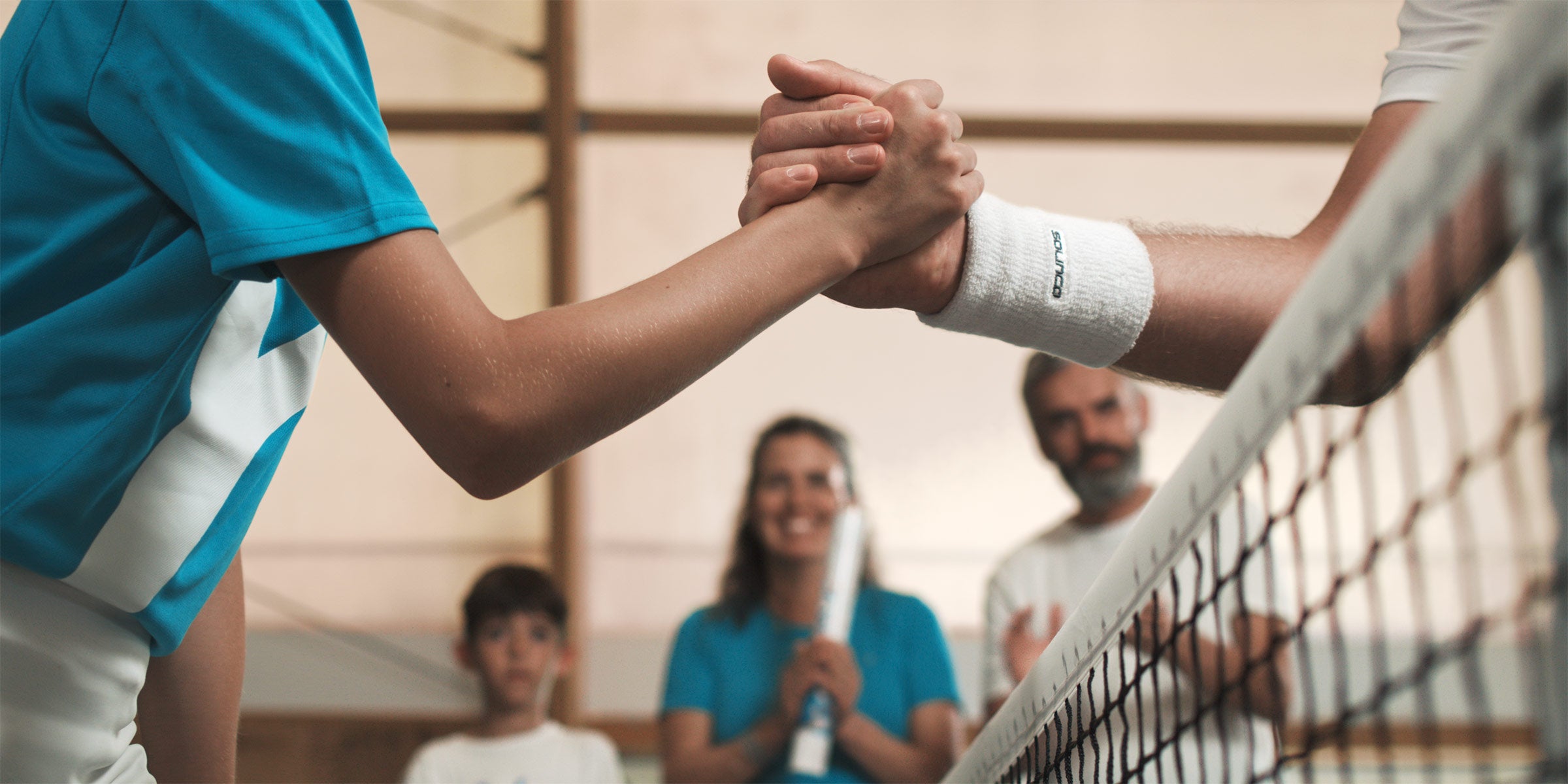Whether you're a newbie or an enthusiast, this article is for you: here's a quick look at the rules of Pickleball, so you can get on the field prepared.
One of the secrets to Pickleball's success? Its extreme accessibility.
Not only in terms of the necessary equipment, but also in terms of simple yet comprehensive regulations.
In this article you will find all the information you need to better understand the discipline of the moment and to get on the playing field ready for the challenge.
The Rules of Pickleball
Equipment and field dimensions
For a Pickleball game you need dedicated rackets, smaller than those used in tennis. They are square in shape, made of wood, metal or graphite. The balls are the size of tennis balls, with a couple of differences: they are made of plastic, hollow and perforated. Why do Pickleball balls have these holes? To prevent the effect of the wind, during outdoor matches, from making the trajectory of the shots unpredictable.
A regulation court measures 13.41 meters in length and 6.10 meters in width. It is divided into 6 sections. The area near the net, called the “kitchen” or “non-flying zone,” does not allow the ball to be touched on the fly. The sections located at the end of the two halves of the court represent the area where the players are located.
Service
The matches begin with the service, the first shot of the game. It must be performed by hitting the ball from low to high. During the service the server must keep both feet beyond the baseline. The racket must hit the ball no higher than the waist (there is an identical rule in Padel).
The serve must be made diagonally: for example, the player serves from the right side and must throw the ball into the opposite side, on the left, of the other half of the court. It is not allowed to serve in the Kitchen of the opponent's area: the ball must touch the service area of the player against whom the match is being played, located on the diagonally opposite side to the serving side.
In case of an error during service, the turn to serve will pass to the opponent (during one-on-one matches), or to the player's partner (in case of doubles).
The Double Bounce Rule
After the service, each player must let the ball bounce once before hitting it. In the exchange of the first two shots following the serve, therefore, it is not possible to hit on the fly.
Kitchen
In the 2.13 meter zone near the net, the “no-fly zone” or “kitchen,” volleys are not allowed. You can only touch the ball if it has bounced on the ground first.
Points Assignment
Points are always awarded only to the player (or team) serving. If the server is awarded a point by the opponent, he loses the turn to serve.
If the opposing player touches the ball in the Kitchen on the fly, in response to a serve, the point goes to the server.
The game ends when one of the players or teams reaches 11 points, with an advantage of at least two points over the opponent. In the event of a tie at 10 points, the game continues until one of the players reaches a two-point advantage.
Change of service
As we have seen, a change of serve occurs when a player or team wins a point during the opponent's service turn. The point is not awarded, but the player who has received it loses his service turn.
In the event that a player makes a mistake while serving (ball out of bounds or directed into an illegal space on the court), he loses the service. The turn to serve passes to the opponent, without assigning points.
The game of “Cat and Mouse”
Especially during the first games, beginners can resort to the game of “Cat and Mouse”. This variation of Pickleball requires that the first five exchanges between opponents take place collaboratively, without forcing the hand. This helps to improve coordination and technique.
Once you get past the first five rallies, you can start hitting harder to try to get a point.

